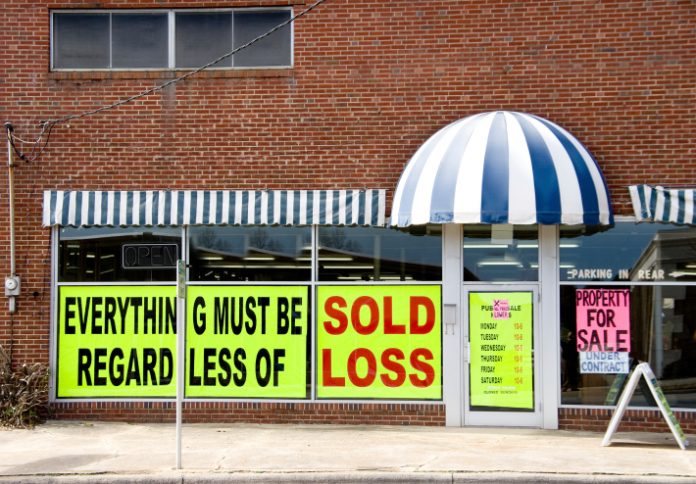The U.S. automotive industry is unlikely to meet new federal regulations limiting vehicle emissions, but the rules will raise costs for consumers, according to industry experts.
The rule changes by the U.S. Environmental Protection Agency (EPA) include a new set of carbon dioxide (CO2) emissions standards for 2023 and later model year cars. The U.S. National Highway Traffic Safety Administration (NHTSA) issued new Corporate Average Fuel Economy standards (CAFE) for vehicles through 2026.
On top of the new emissions and CAFE standards, a waiver allowing California to set emissions regulations stricter than federal standards has been reinstated by the EPA under the Biden administration. The practical effect of the waiver is that California now sets emissions and manufacturing and design standards for the whole country.
‘Record High Vehicle Prices’
The current supply chain disruptions in the automotive industry are almost over, but will be replaced almost immediately by problems created by the new regulations, says Geoffrey Pohanka, vice chairman of the National Automobile Dealers Association and president of the Pohanka Automotive Group.
“One automotive executive expected supply chain disruptions, which have limited the new vehicle supply, to continue until at least the end of 2023,” said Pohanka. “As production constraints inevitably dissipate a new one will emerge, one caused by new federal regulations.”
The new regulations require lower emissions than achieved by any combustion engine vehicle on the road today, says Pohanka.
“Manufacturers must improve the average fuel economy of their fleet by 40 percent by 2026 and at the same time meet CO2 emission levels that are lower than any gasoline-powered vehicle now available for sale,” Pohanka said. “In their attempt to hasten the transition to a ‘zero emissions’ future, these regulations will likely cause a shortage of gasoline-powered vehicles and an explosive demand for minerals essential for electric car battery production.”
The cost of a car will rise to the point that they could become prohibitively expensive for the average American, causing more people to keep their older and less environmentally friendly cars on the road longer, says Pohanka.
“Prices for new and used cars will continue to increase and as interest rates rise to meet the threat of inflation, vehicle affordability will become a major hurdle to many,” said Pohanka. “Record high vehicle prices likely will cause many to simply keep their older, less fuel efficient, and more polluting cars on the road, which is contradictory to the purpose of these new regulations.”
States Challenge Legality
NHTSA’s updated CAFE standards require an increase in fuel economy of 8 percent per year until 2025 and 10 percent in 2026 model year vehicles.
In addition, the EPA has set specific limits in new “2023 and Later Model Year Light-Duty Vehicle Greenhouse Gas Emissions Standards” that are significantly stricter than previous rules. For passenger cars, the requirement goes from 181 grams of CO2 per mile in the 2022 model year to 166 grams per mile in 2023. By 2026, the fleet-wide requirement is set at 132 grams per mile. This represents the fastest reduction in emissions year-to-year for fleet-wide compliance yet.
These rules will harm average Americans in many ways, says Myron Ebell, director of the Center for Energy and Environment at the Competitive Enterprise Institute (CEI).
“The Biden administration’s rules for vehicle fuel economy and greenhouse gas emissions are a disaster for Americans trying to own a car and keep driving,” Ebell said. “If the rules survive legal challenges, then in my view we will be moving to a society in which only wealthier people can afford to own cars.”
CEI is a plaintiff in a lawsuit challenging the EPA’s new greenhouse gas standards. In addition, the attorneys general of 17 states are suing the EPA for waiving the Clean Air Act’s preemption for California, citing favoritism. Section 209 of the Clean Air Act expressly forbids individual states from levying more strict standards on emissions than the federal regulations. The California waiver oversteps this rule, the plaintiffs argue.
Some Automakers Support New Rules
Automakers that support the federal rule changes are also defending the EPA in the lawsuit over the California waiver, including Ford, BMW, Honda, Volkswagen, and Volvo.
The California waiver was previously revoked by the EPA under Trump in 2019, after complaints from automakers who wanted to sell in California’s market forced to meet separate standards across the nation needed to produce cars that meet strict standards set by California and for states not adopting California’s standards.
Complying with separate standards would raise the cost of the cars across the board for all states.
Betting on Bailouts?
Automakers may be betting on government bailouts if they are unable to keep up with the ambitious new standards, says Ebell.
“The automakers not opposing the new NHTSA or EPA rules, and those even supporting the California waiver, have calculated that when they fall short of meeting the new standards the federal government will bail them out,” Ebell said. “In fact, they have already started by lobbying strenuously for extended and enlarged tax credits for EV purchases.”
Meeting the new rules will depend on electric vehicle sales, and will necessarily cause price increases across the combustion engine world, says Ebell.
“The only way that these standards can be met is if the auto industry can build enough electric vehicles quickly enough and if enough consumers want to buy them,” said Ebell. “Neither is remotely likely, although the regulations are designed to force people into buying EVs by making gas and diesel-powered cars and trucks too expensive, but the prices of electric vehicles will climb as well.”
Linnea Lueken (llueken@heartland.org) is a research fellow with the Arthur B. Robinson Center on Climate and Environmental Policy at The Heartland Institute.
For more on CAFE standards, click here.
For more on the costs of electric vehicles, click here.



























[…] require lower emissions than achieved by any combustion engine vehicle on the road today. (Read more) […]